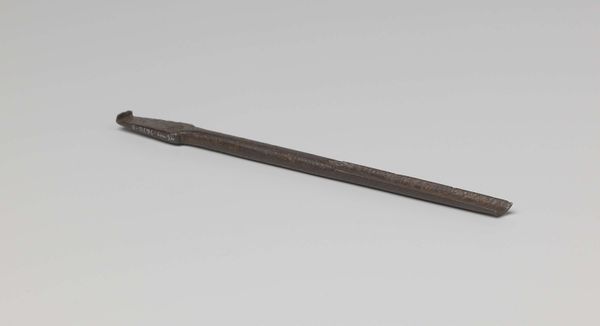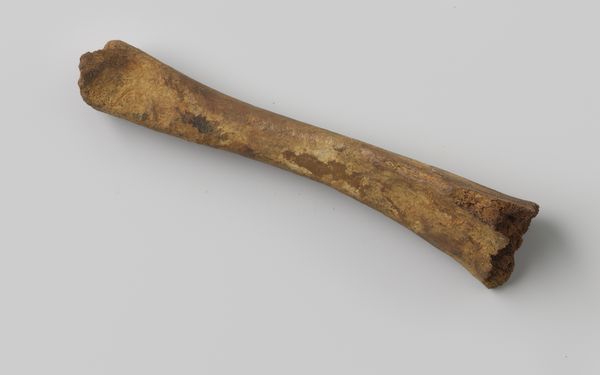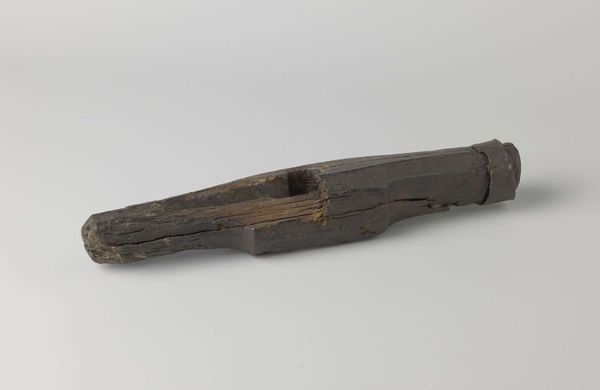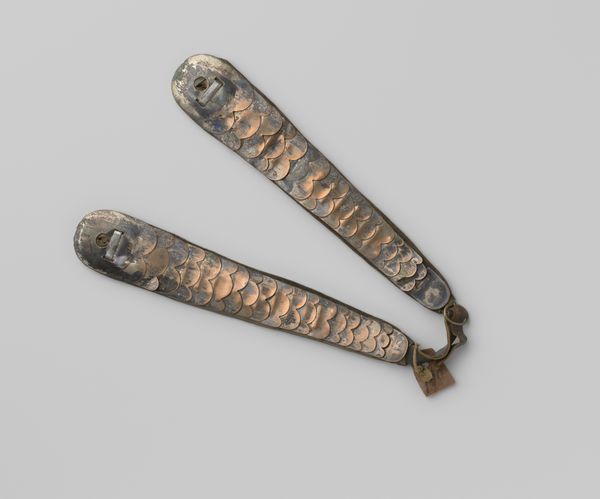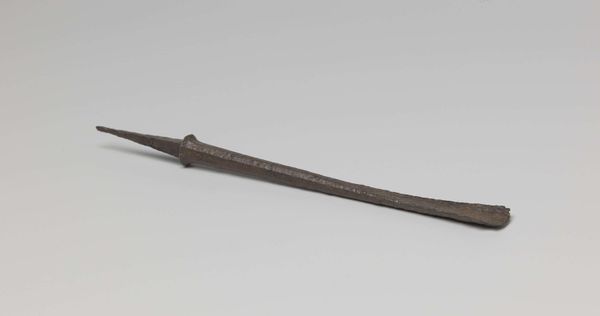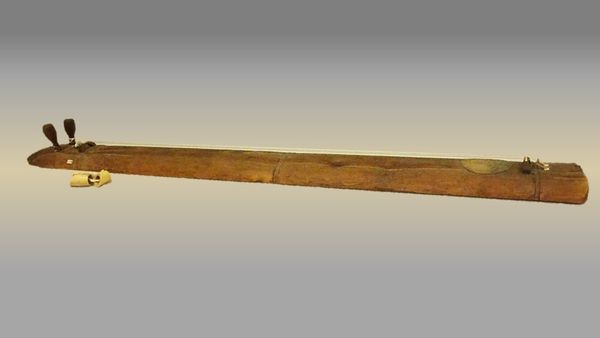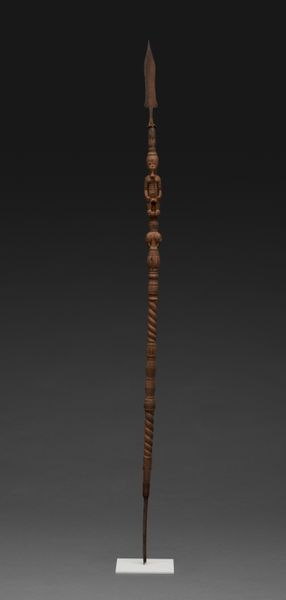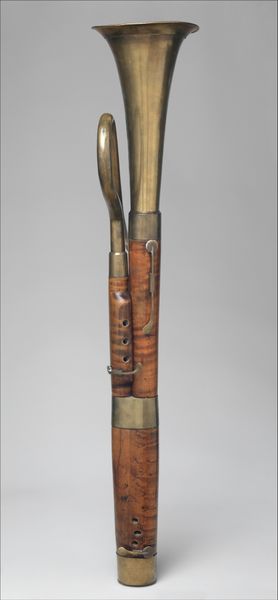
carving, sculpture, wood
#
carving
#
sculpture
#
sculpture
#
carved
#
wood
Dimensions: Height: 22 in. (55.9 cm) Diameter: 2 1/4 in. (5.7 cm)
Copyright: Public Domain
Curator: These striking wooden forms are Putorino, carved instruments from the Maori people between 1850 and 1900. You can find these at the Metropolitan Museum of Art. What is your initial impression? Editor: Well, the patina of the wood suggests great age and use, a connection to ancestors. But also, I can almost hear them... haunting melodies, maybe for rituals or laments. Curator: Exactly. The Putorino are taonga puoro—singing treasures. Their sound isn’t just musical; it’s considered a voice of the ancestors. They reflect not only musical expression, but also act as carriers of history and genealogy. Editor: I can definitely feel that depth. Look closely at the carving; it's like a face on the upper register of both flutes. What do we know about who would have made these instruments? Curator: Expert carvers were carefully selected based on lineage. Musical and carving traditions passed down through families or tohunga—experts. The creation wasn't merely craft but a sacred undertaking. The carved figures, sometimes incorporating personal facial tattoos called moko, linked the instrument and its user. Editor: And did this have to do with asserting or protecting cultural identity during periods of colonial suppression? We know musical traditions can sometimes carry potent symbols of resistance. Curator: Precisely. The act of creating and playing Putorino preserved cultural knowledge, reminding the Maori people of their heritage despite outside influence. Its sustained ritual and personal usage underscores its historical role in fostering both resistance and solidarity within the community. Editor: What an object to hold. I am drawn to thinking about the complexities surrounding sound, identity and reclamation. The agency to produce a distinct frequency embedded with intentionality can be so profound. Curator: Absolutely. We can view such ancestral voices and images as key for navigating social challenges of the day. Editor: Thank you for illuminating the complexities of its form, construction, and sustained purpose! Curator: It was my pleasure to give you insight to the fascinating socio-cultural story behind this Indigenous carving.
Comments
No comments
Be the first to comment and join the conversation on the ultimate creative platform.

